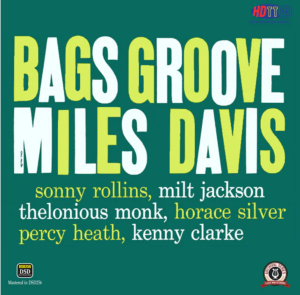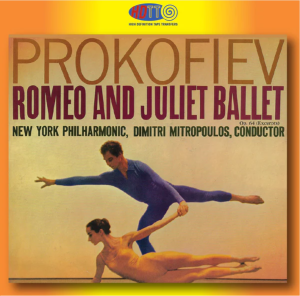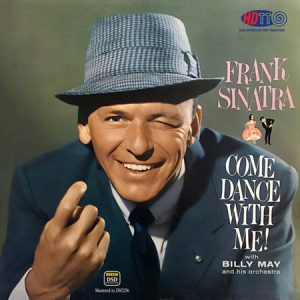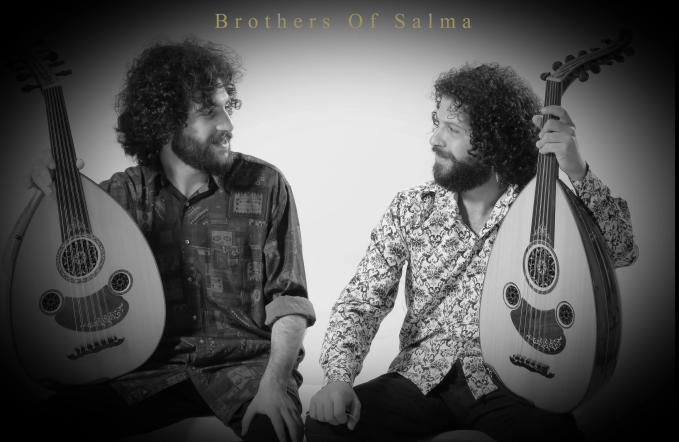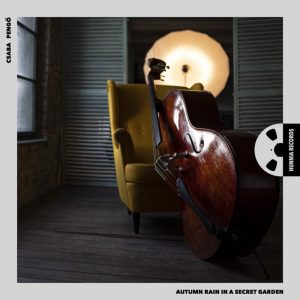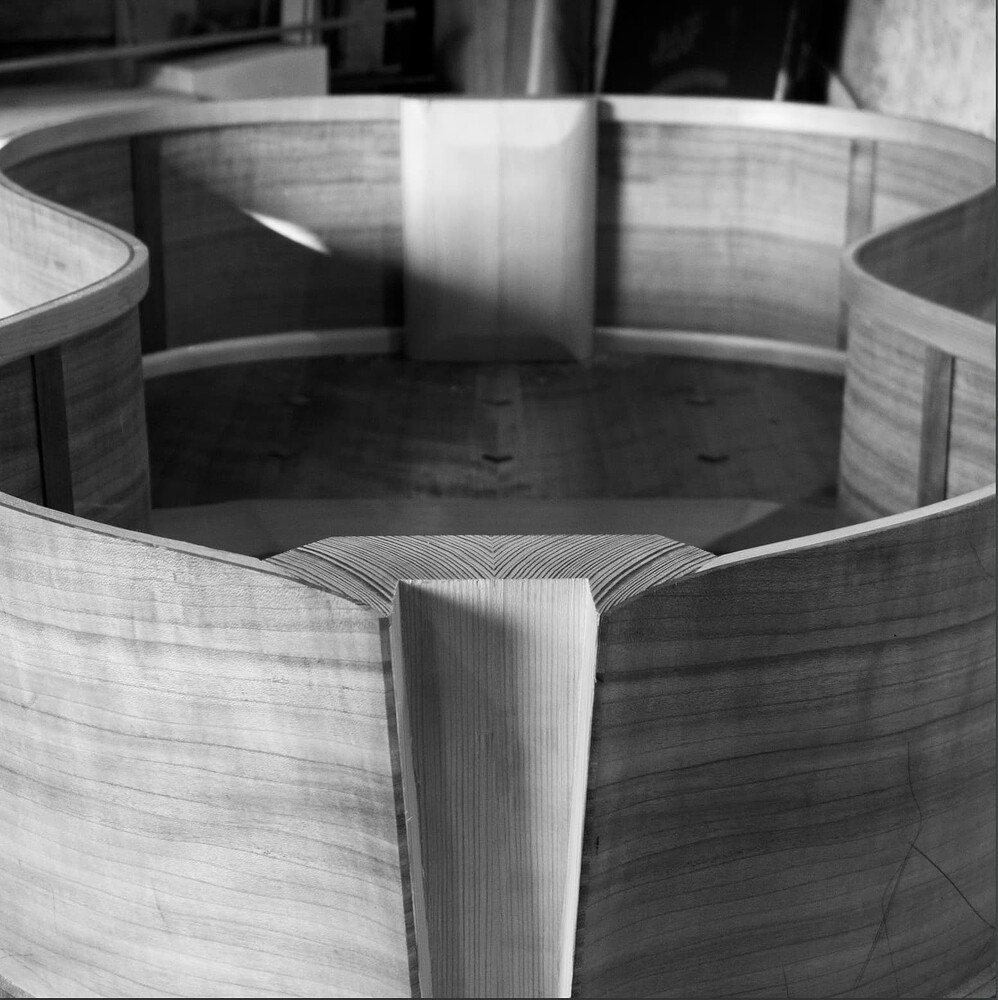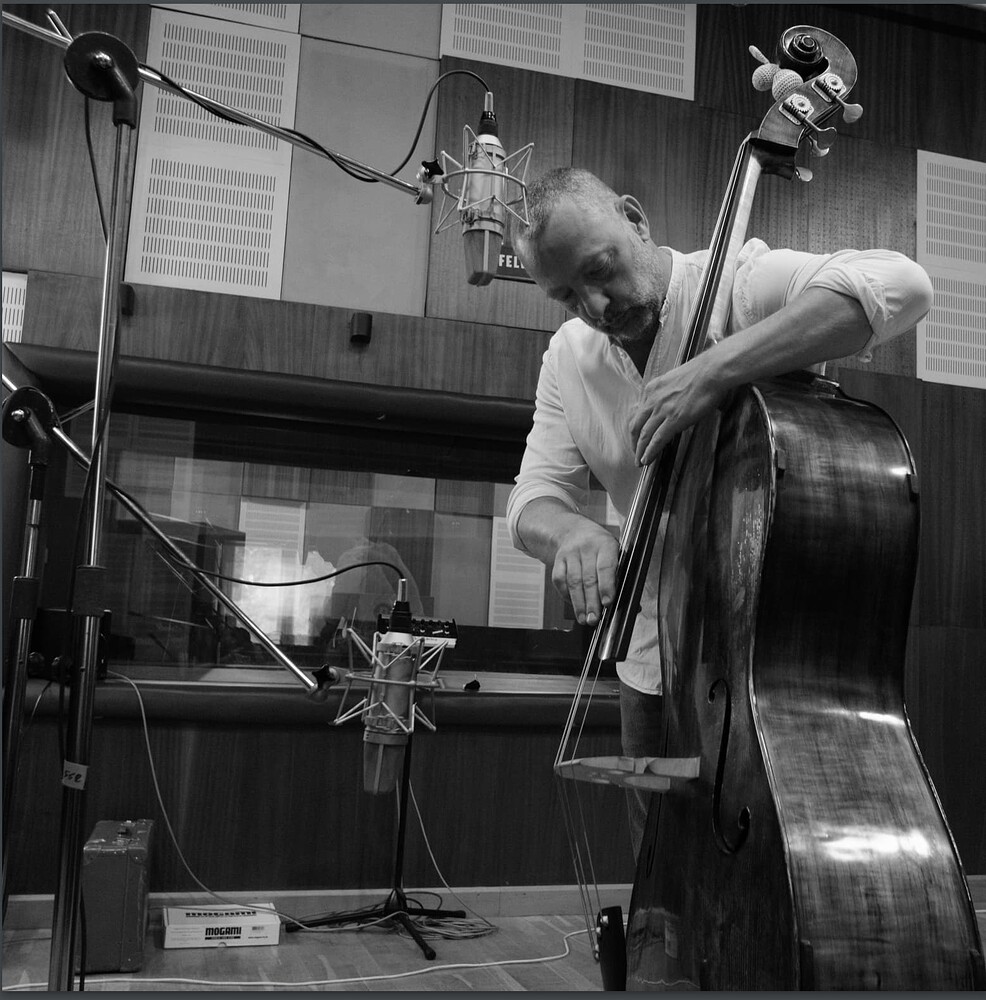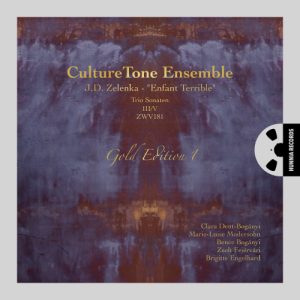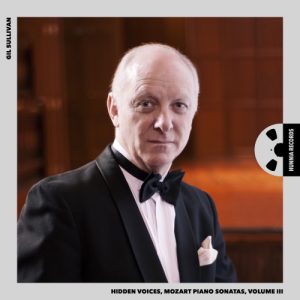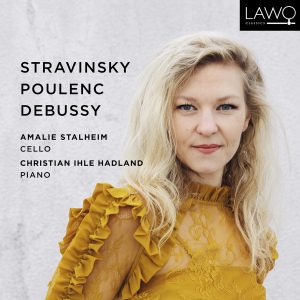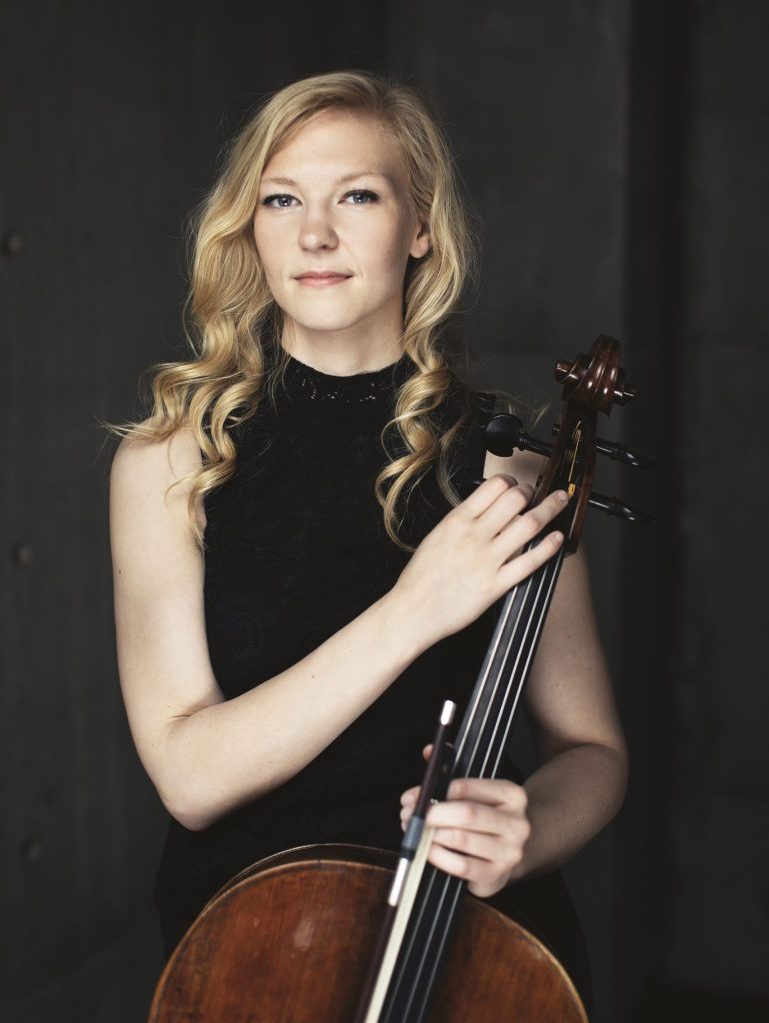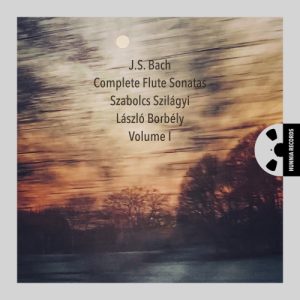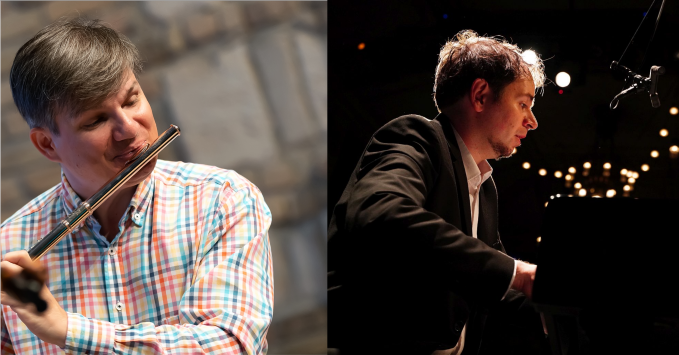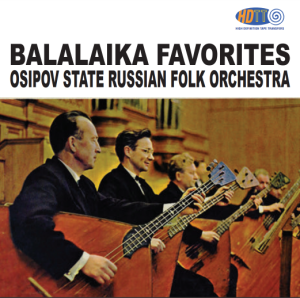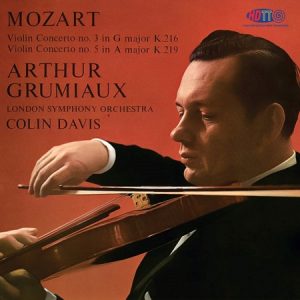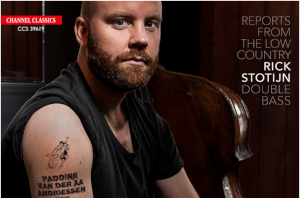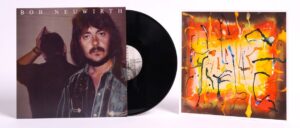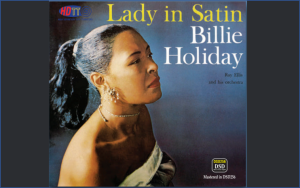In this issue of Recent Finds we have some nice releases from Hunnia Records, Lawo Classics, Groove Note, three World Music video EPs from TRPTK, and another large batch of recently released reissues from High Definition Tape Transfers (HDTT). Enjoy!
Miles Davis - Bags' Groove, with Miles Davis, Sonny Rollins, Milt Jackson, Thelonious Monk, Horace Silver, Percy Heath, Kenny Clarke. HDTT 1954 2023 (Pure DSD256) HERE
What a super fantastic lineup on this album! It has been the cornerstone of my jazz library for decades and that position in my and many other jazz lovers' collections is well deserved. If you don't already know about this album and its importance to jazz, just do a bit of internet searching and look at AllMusic.com (HERE) and Wikipedia.
This reissue from HDTT does huge justice to this great album. The Pure DSD256 transfer from a 15ips tape is open and transparent, with great detail, immense timbral accuracy, and just beautiful analog sound. The sound is so clean it could have been recorded yesterday, not nearly 70 years ago. Yes, it's mono. It's also glorious—just get it. Highest recommendation!
Moon Beams, The Bill Evans Trio. HDTT 1962 2023 (Pure DSD256) HERE
An album of ballads, with Bill Evans leading the trio more assertively than ever before. This was the first trio album Evans recorded after the death of his long time friend and bassist Scot LaFaro. If you enjoy this album (and surely you must), this is without question the digital issue you need to add to your music library. The AP SACD is very nice, and if you're happy with it, I won't argue that you must get this new release and you do get three bonus tracks of alternate takes with the AP SACD.
But for me, this Pure DSD256 transfer surpasses the SACD with greater timbral density and an organic "rightness" to the sound that the SACD lacks. As the saying goes, "There is simply more there there." I'd sacrifice the bonus tracks for this sound quality in a heartbeat.
The original recording has some issues that show up no matter whether LP, CD or tape, so be aware. The recording is hard left, hard right stereo image, not the kind of ensemble stereo recording we're used to today. And, the piano sound is somewhat brittle on top—a bit "tinkly" as another commenter said. In other words, it sounds like a jazz piano as tuned back in the day. But, the music is what we're looking for here, and this is the best DSD256 digital transfer I know of.
Prokofiev Romeo and Juliet Ballet Excerpts - Dimitri Mitropoulos, New York Philharmonic. HDTT 1957 2023 (DSD256, DXD) HERE
Dimitri Mitropoulos' name always comes up whenever a short list of great twentieth-century conductors is compiled. This performance of a his own suite from Prokofiev's Romeo and Juliet Ballet will tell you why. This 1957 recording is excellent and vividly captures the "Mitropoulos sound": energized, incisive, and always colorful. Mitropoulos was a master at combining and juxtaposing excitement and solemnity, both of which are called for in this work by Prokofiev.
I say that this is Mitropoulo's own suite only to the extent that he pulled what he considered the best from the two suites Prokofiev composed to create is own score for this performance. Not unusual. And here delightfully well done. It is as dramatic a picture of Prokofiev's ballet music to Romeo and Juliet as any I know—it is filled with drama, expression, tenderness, and insight. I have many other performance of Prokofiev's music for Romeo and Juliet in my library. This is one of the best.
HDDT has sourced this file from on original Columbia 6-eye LP, and the transfer is exquisite. Most will never have heard the LP sound this good, this exciting, this filled with great orchestral energy and detail. With this release, Bob Witrak delivers yet another superb bit of audio magic in his ongoing Vinyl Record Restoration (VRR) series. Most highly recommended.
Postscript: Yes, I've heard the boo-birds cry out over the LP transfers. I continue to maintain that those dissing these releases simply have not listened to them. If you loved the LPs back in the day, these transfers should warm your heart and delightfully tickle your ears. HDTT is doing a terrific job with this series. And they are tapping into a wealth of new content to give us better digital files sound quality from these recordings than the majors have provided. To my ears and for my love of music, these LP transfers from HDTT are a huge gift.
Come Dance With Me!, Frank Sinatra, Billy May And His Orchestra. HDTT 1959 2023 (Pure DSD256) HERE
Come Dance with Me! stayed on the Billboard charts for two and a half years—longer than any of Sinatra's many other great albums. It is a lively, bouncy collection of standards that simply dance. Sinatra's is in great voice and that voice is perfectly captured as he swings with great backing from Billy May and his Orchestra. The key sonic value of this release is Sinatra's voice—front and center, with a richness, depth, and detail that the thin, two-dimensional CD misses completely.
This HDTT release contains the 12 tracks originally released in 1959. It does not include the four bonus tracks that were added in the 1987 CD reissue. But, that's a trade I'll very happily make to get the superb sound quality of this Pure DSD256 transfer from the 15ips 2-track analog tape. Highly recommended to all Sinatra fans.
Fire & Rain, Jacintha. Groove Note 2018 (DSD64 from the 30ips analog tape master, also with higher rate DSD128 and DSD256 modulations) HERE
Producer Ying Tan and Jacintha here deliver an exceptionally natural sounding album. The Singapore-based singer, Jacintha, is well known in audiophile circles for her delivery of the torch and blues songs in her sultry, rich voice. This 2018 release was her first album in ten years. I have to admit to never being a great fan of her style, but this album is causing me to reconsider. Here her approach is lighter and a bit laidback, and her delivery less affected, less calculated.
All of this is perfectly suited to these slightly melancholy songs of James Taylor, to whose music this album is an homage. Jacintha's opening a capella rendition of "Sweet Baby James" is so very different, but utterly effective and ever so beautiful. As guitar and violin then join, the delicacy is maintained through the spare instrumentation for an exquisite few moments of music making. For me, this is the high point of an album that contains many felicities.
As always, the sound quality on this Groove Note album is breath-taking in its naturalness. Ying Tan has produced many excellent albums that regularly make the rounds of audiophile listening sessions. Yet, his albums have rarely struck me as "audiophile fodder." They are simply beautifully natural sounding. This album may rank near the top of the Groove Note catalog for me. And I hope Jacintha will be motivated to continue to make more music in this less affected manner. I may become a fan after all these many years. I am certainly a fan of this album and most highly recommend it.
Please allow me to nerd out just a bit on the technical aspects of this recording...
The album was tracked to 2-inch Multitrack Analog tape running at 30ips and mixed down to 1/4 inch tape also running at 30ips. It is a fully analog master tape. All tracking and mixing was done at Sunset Sound by recording engineer and co-producer Michael C. Ross. The album was mastered and transferred from Analog to DSD64 by Bernie Grundman at Bernie Grundman Mastering using the 1/4 inch 30ips master tape. It was originally released by Groove Note on 45 rpm 2LPs and on SACD.
NativeDSD releases the DSD64 file as a download, but also offers a DSD128 and DSD256 re-modulation of that original DSD64 file through their Higher Rates Program (discussed in their Blog, HERE). These higher bit rate DSD128 and DSD256 releases are all pure DSD created by NativeDSD Mastering Engineer Tom Caulfield (interview HERE). They are not up samplings because there are no PCM or DXD conversions involved in their production. They are re-modulations of the original DSD64 encoding modulation that produced the DSD64 releases. The sonic advantage to these DSD128 and DSD256 releases, as with all higher DSD bit rate releases, is the wider frequency passband prior to the onset of modulation noise. This results in the listener's DAC using gentler and more phase linear filters for playback of the music. (From NativeDSD's technical notes.)
So what am I listening to? On my main system with the Playback Designs MPD-8 DAC (reviewed HERE), I am listening to the DSD64 files. I do this knowing that the MPD-8 will do it's own re-modulation to many times greater before finally converting to analog. In my experience across many different albums, the MPD-8's modulation algorithms simply sound just slightly better.
But, on our secondary system using a chip-based Teac UD-503 DAC, the DSD256 files created by Tom Caulfield at NativeDSD sound better. This is all due to the technical explanation NativeDSD provides.
So, which file should you get?
As I've said before, if your DAC is based on a micro-chip DAC processor, my expectation is the the DSD256 file will sound better. Just get it. But, if your DAC is of a more esoteric (and correspondingly more expensive) design using programmable gate arrays or some sort of ladder processing design, it may be that the DSD64 file will sound slightly better as it does for me using the MPD-8. The only way to know is to learn with what files your DAC will be most happy. This is definitely YMMV territory.
The Oscar Peterson Trio At Newport, The Oscar Peterson Trio, with Roy Eldridge, Sonny Stitt and Jo Jones. HDTT 1957 2023 (Mono, Pure DSD256) HERE
Rarely does it get any better than this, with Ray Brown bass, Herb Ellis guitar, Oscar Peterson, Jo Jones drums, Sonny Stitt tenor Saxophone and alto saxophone, and Roy Eldridge trumpet. And wow do they ever play! The sound quality is excellent for a live recording, as are many of these Newport Jazz Festival recordings. But it is ultimately the music and the performers that make this album so excellent. To hear Sonny Stitt, Roy Eldridge and Jo Jones additionally joining the Trio is simply a wonderful experience. And the additional complexity of the tunes being played is a treat one does not often experience. Twelve tracks,
This transfer from a 15ips tape is of the excellence we've come to know from HDTT - just very well done.
Doubling in Brass, Morton Gould and His Symphonic Band. HDTT 1959 2023 (DSD256, DXD) HERE
Another Lewis Layton and John Pfeiffer RCA Living Stereo extravaganza! This transfer from an original "Shaded Dog" pressing is super clean, detailed and transparent. The percussion transients are sharp and highly resolved, and the timbre of the brass sounds spot on. The overall sound quality has that lovely analog depth, dimensionality and "roundedness" that made these Living Stereo releases such a treasure.
And, yes, I'll agree that the overall quality of the sound is that of 1959, not 2023. But step back in your mind to your enjoyment of the wonderful Living Stereo sound and the excellence of Morton Gould's conducting in these standards for band, and I think you'll find yourself enjoying this album as much as I am. As to this release being a transfer from the LP, I'll say this again: if you enjoyed the original LPs, I can't imagine you being disappointed in this digital transfer. My guess is that this release may sound better than 90% of listeners have ever heard the original vinyl. I am purely delighted with the sound quality. Well done!
Recorded at Manhattan Center, New York City, the sonic capture of the symphonic band is excellent. Great imaging and depth of soundstage. Excellent micro-dynamics and inner detail. Very natural and accurate timbre of the brass. Sharply punctuated percussion, with scintillating top hat, snappy snare drums, and nice booming bass drums with the further capture the skin tone, not just the boom. One can happily go down all the audiophile descriptors when talking about this recording. If you enjoy symphonic brass recordings, this recording should be in your library. And, with all the capture of detail, there is no obvious sense of a spot lit multi-mic setup. Instead, it sounds like a fairly minimally mic'd, natural stereo array of sound. (Unlike the several more well known audiophile standard symphonic band recordings from another label.)
Brothers of Salma - Three EP Videos. TRPTK 2023 HERE
(4K UHD or HD Blu-ray quality video, with Stereo 192kHz 24bit LPCM, 5-channel 96kHz 24bit DTS HD MA, as well as 5.1.4-channel Auro-3D and Dolby Atmos TrueHD)
Brendon Heinst, TRPTK's founder and recording engineer, has a fine aesthetic sensibility. I very much enjoy his recordings. So, when he announced that he'd collaborated with videographer Jonas Sachs of NativeDSD to create some high resolution videos of these fine musicians, I just had to check them out.
The performances are a true pleasure. The Brothers of Salma are Jaber Fayad and Talal Fayad, true masters of the oud. In the Arabic and Turkish tunes in two of the EPs, one gets a glimpse into a culture that we don't often experience here in the U.S. The third EP is of Erik Satie's famous Gnossienne No. 1, performed live by Brothers of Salma with Rebal Korkmaz on percussion. As Jaber Fayad writes on his web page about his solo performances, "Close your eyes and listen to the intimate pure sound of the mother of all picking instruments, and Sufi traditional music in a modern arrangement and elegant free improvisation."
There are three separate videos of six to six and a half minutes each in these extended play mini-releases which you can purchase individually for $6 or $9 each (depending on the video resolution you select, which affects the file size to be downloaded).
TRPTK released an earlier audio-only EP by Jaber Fayad performing three pieces and also recorded by Brendon Heinst: Sufi Takism, available HERE. It is masterful. And it is truly immersive to simply close your eyes and flow with his playing.
Sufi Taksim, Jaber Fayad. TRPTK EP (DXD) discussed above.
Jaber Fayad was born in As-Suwayda, Syria; he started learning the Oud at a young age. He left Syria after obtaining a bachelor's degree in Oud, performing at the conservatory of Damascus. He then graduated cum laude with his master's degree at Codarts, the conservatory of Rotterdam. He is considered a diverse and elastic musician. His Oud performance mirrors the range of his artistic influences and varying musical styles, such as Arabic music, Azerbaijani music and the vast and various principle of Ottoman traditional music.
Autumn Rain in a Secret Garden, Csaba Pengő. Hunnia Records 2023 (Pure DSD256) HERE
Do you enjoy double bass? This is an excellent set of performances on solo double bass, composed and performed by the artist who built the instrument. Recorded directly to DSD256, with no PCM editing, this album captures the timbre of the double bass more accurately than any in my music library. The only downside is that it is very closely miked, but this means that every subtle detail is superbly captured. Due to the large dynamic range, the recording was made at quite a low gain setting compared to what one may be used to, so be prepared to turn the volume up a bit if your system can handle it.
Sonically, this recording will be a true test of your audio systems' ability to handle transients (the percussive strikes on the body of the instrument will be quite challenging), to resolve subtle detail, to accurately reproduce the resonant decay of the strings, string overtones, and the detail contained in deep resonating bass strings and wood instrument body. My guess is that many systems will not be up to the challenge of reproducing the full range of sonic complexity captured in this recording.
Musically, the compositions are a nice mix of classical, jazz and world music influences synthesized into a very personal set of expressive explorations of this superb sounding instrument. Highly recommended!
About the recording process, Csaba Pengő writes, "It is a very difficult task to prepare for a recording that requires so much energy and attention. As this is not the usual recording with a thousand cuts and replays but follows the classical recording method (rehearsing at home, recording in the studio), it requires a very high level of preparation from the performer. Since it is a solo performance, the situation is made even more difficult by the fact that there is no other instrument to rely on, even if only for a short time.
"You can hear every little noise from the bass, so the whole piece must be played with the utmost attention, and if that attention is distracted for as little as a moment, you need to start the recording again. In this case, two and a half studio days were allotted for the twelve pieces, which proved sufficient time for the recording. Some compositions were recorded on the second time, some on the fifth, and some on the first. It was a great help that my friend, László Gazdag, who also made my first album, gave me maximum support during the studio work, for which I am really grateful to him."
Csaba Pengő at his workbench and recording.
J.D. Zelenka, Enfant Terrible, Trio Sonaten III/V, ZWV181, CultureTone Ensemble. Hunnia Records 2023 (DXD) HERE
Czech composer Jan Dismas Zelenka (1679 - 1745), is one of the most inventive composers of the Baroque era, easily comparable to Bach, Handel and Telemann, and highly regarded as a composer during his lifetime. Yet, after his death, his music was largely neglected.
Per the article in Wikipedia (HERE), "Zelenka's musical language is closest to Bach's, especially in its richness of contrapuntal harmonies and ingenious usage of fugal themes. Nevertheless, Zelenka's language is idiosyncratic in its unexpected harmonic twists, obsession with chromatic harmonies, large usage of syncopated and tuplet figures, and unusually long phrases full of varied musical ideas."
I've long enjoyed his works because they are so surprising and filled with unusual twists and turns and is influenced by Czech folk music. In many respects, his willingness to challenge the established traditions of his time may be what makes his music sound so fresh and engaging to me today.
On this album are two of Zelenka's 6 Trio Sonatas, considered even today to be extremely challenging and requiring a high degree of virtuosity to pull off successfully. Believe me, I've heard a number of attempts that simply can't scale the requirements. Here, members of the CultureTone Ensemble delivery these works very successfully, with a seeming facility that completely belies their challenges.
Trio Sonata No. 3 was originally composed his for violin and oboe. This version uses two oboes and works quite nicely as an all wind arrangement.
CultureTone is a collection of artists who assemble and reassemble based on the needs of the music and is part of the CultureTone Foundation located in Vác, Hungary. On this album we hear Clara Dent-Bogányi amd Marie-Luise Modersohn on oboes, Bence Bogányi on bassoon, Zsolt Fejérvári on double-bass, and Brigitte Engelhard on harpsichord. This choice of instruments for these Trios is a fitting tribute to a composer who himself was unafraid to challenge traditions.
Recorded June, 2023, at CultureTone Foundation Base, Vác, Hungary in DXD 352.8 kHz, 32bit.
Brahms, Symphony No. 2, Charles Munch, Boston Symphony Orchestra. HDTT 1955 2023 (DSD256, DXD) HERE
Why RCA never released this on the Living Stereo label is a mystery to me. It is a fine performance and a very good early stereo recording. Competition is fierce for performances of this work, but Munch has much to say and is very competitive, even today. He is attuned to the lyrical, pastoral qualities to be found in the symphony, but he moves things along briskly. In the process, he does not dawdle or rush while maintaining an absolute clarity throughout. The BSO is superb.
Recorded by Lewis Layton (engineer) and John Pfeiffer (producer) for RCA in stereo in 1955. RCA released it in 1956 on mono LP and a stereo 7.5ips two-track tape (the only consumer media for stereo at the time), which is the source for this transfer. RCA never released this on the Living Stereo label. It was finally released as a stereo LP on their mid-priced Gold Seal label in 1975
HDTT has done its usual very fine job with the transfer, completely belying the nearly 70 years since the source tape was created. This is another fine example of great stereo recordings from the 1950s that belong in your music library.
Charles Munch conducting, Creative Commons
Hidden Voices, Mozart Piano Sonatas: Volume III - Gil Sullivan. Hunnia Records 2023 (Pure DSD256) HERE
Australian pianist Gil Sullivan continues his cycle of the Mozart piano sonatas now with Volume 3. I reviewed Volume 1 HERE and I am very pleased to see that this new Volume 3 is being released in Pure DSD256. And, quite happily both the original Volumes 1 and 2 are now also available in Pure DSD256. Quite a sonic treat! (Reminder to self: must go back and get the new Pure DSD256 releases of Volumes 1 and 2.)
As I said in my earlier review of Volume 1, these performances by Gil Sullivan are delightful, they are colorful, and they are dynamic. They fully utilize the dynamic capabilities of the modern Steinway grand piano. Sullivan is not into delicate, tinkly, prancing, tunes. He has something to say and he thinks Mozart does, too—he plays accordingly.
Not everyone may like this style of playing, and that's okay. We're entitled to our preferences in choosing what to listen to. But I, for one, most decidedly do like the the very direct and powerful style in which Sullivan plays these works. He also explores very different phrasing than some other pianists, often more like Alfred Brendel's adventures in sound, say, than like Ronald Brautigam or Lili Krauss (both of whose playing I greatly enjoy). His interpretations are delightfully fresh. And he brings to his playing very high technical skills and a deeply communicative command of the music.
Certainly Sullivan can bring delicacy where called for—just listen to the opening bars of Piano Sonata No. 4 in E-flat major, K. 282, track 1 on this album. But more importantly for me, he communicates the hugely intelligent, brash, overly confident Mozart with all of his likely warts, eccentricities, and egotism. Sullivan writes in the included booklet, "Having listened for over half a century to many tens of thousands of recordings of Mozart's music... Since experiencing Mozart primarily as a youngster playing my first sonatas and concertos, I immediately felt there were deeper layers than just the melodic oil slick floating at the surface, so have been steadfastly drilling down to the nub Mozart's music throughout my career."
To hear such an accomplished pianist "drill down to the nub of Mozart's music" is a real pleasure. And by accomplished, I mean truly so. Sullivan may be from the far continent of Australian but he travels the world performing each year throughout Asia, Europe, the U.K., and the United States. And he has performed twice in New York's Carnegie Hall, plus given recitals in the Amsterdam Concertgebouw, the Berlin Konzerthaus, the Bruges Concertgebouw, Chicago's Centre for International Performance and Exhibition, New Hampshire's Claremont Opera House, the National Opera House of Vietnam, plus the National Concert Halls of Thailand, Taiwan, Hong Kong and Korea. That's a certain amount of believable cred.
Me? I just listen to him and enjoy his playing.
So, when I read some commenter at NativeDSD dissing these recordings by Gil Sullivan, I must simply shrug and say, as gently as I can, "We clearly are not hearing the same things and we clearly don't share the same listening priorities." I will leave the rest of my reaction unsaid. But I will add one final note: this is a Pure DSD256 recording, so it is performed virtually live with no overdubs and only very limited edits. There may have been multiple takes, but what we are hearing is largely a live in the studio performance. And that takes some technical skills to pull off.
Try these performances for yourself. NativeDSD offers full track streaming samples at 48kHz. I think you will find yourself as pleased as I am with what Gil Sullivan brings to share.
Stravinsky, Poulenc, and Debussy Works for Cello and Piano, Amalie Stalheim, Chirstian Ihle Hadland. Lawo Classics 2023 (DXD) HERE
The combination of cello and piano is a powerful draw for me. And when I saw that the album included that not so frequently performed Cello Sonata (1948) of Francis Poulenc, I knew I needed to hear it. And I am not disappointed! That the album also includes the lovely Debussy Cello Sonata in D minor (1915) and the Igor Stravinsky Suite Italienne (1932) were simply added delights. And, yes, Stravinsky really did compose a version of Suite Italienne specifically for cello and piano, collaborating with the virtuoso cellist Gregor Piatigorsky—this is not a transcription.
The performances here are brisk, filled with buoyancy and energy.
For example, in the Poulenc Cello Sonata, Stalheim and Ihle nicely capture the rapidly changing mood swings of this work with its dramatic twists and turns. It is typical Poulenc: beautiful melodies, jaunty rhythms, abrupt changes of direction. The second movement Cavatine is exceptionally beautiful and moving. Throughout, the cello and piano must constantly talk with each other. This communication makes for a thrilling piece of music in the right hands, as here. Poulenc began sketching this work in 1940 but did not complete it until 1948. The first performance was in Paris in May 1949, with Poulenc playing the piano and Pierre Fournier, to whom the piece is dedicated, playing the cello. Regrettably, the work was not particularly well received by critics at the time. But that assessment has evolved over time and today there have been over twenty recordings. Among the various recordings of this work that I've heard, I place this right in the top echelon.
Amalie Stalheim
J.S. Bach, Complete Flute Sonatas, Volume 1, Szabolcs Szilágyi, László Borbély. Hunnia Records 2023 (DXD) HERE
"Bach's flute sonatas are a compelling testament to sensitive, penetrating, and soul-stirring music. Surprisingly, the four sonatas on this disc elude idyllic simplicity, prompting reflections on Bach's pursuit of perfection beyond what we may imagine. These flawless structures serve as a poignant reminder of our human finitude and imperfections, with Bach's music delving into the deepest spheres of the human psyche." —Thus begin the insightful comments by flutist Szabolcs Szilágyi and pianist László Borbély about these works.
This first volume of what is planned to be the complete recordings of the flute sonatas includes BWV 1031, 1032, 1033, and 1034. If the remaining four are as nicely performed as these, we shall have a wonderful integral set performed by two outstanding artists and captured in excellent sonics.
As László Borbély observes, Bach's flute sonatas are far from idyllic contemplations. They are intense, contrasting, fiery, and occasionally brutal. And they soar. Oh, my do they soar. Anyone performing these works as kind, gentle, bucolic works simply misses the depth of the music contained in these pieces. Szilágyi and Borbély don't make this mistake. They tackle the complexity and contradictions contained in Bach's music head on.
As to the performance challenges, which are immense, Borbély writes, "I can think of few chamber music combinations more problematic than the flute-piano duo. And the most obvious reason for this is the different voicing of the two instruments. As in all chamber music, the emphasis here is not primarily on the careful 'reconciliation' of the two instruments, but on the recognition of the impossibility of identification. For in the arts there is no attraction without opposition. Just as there is no true consensus without repulsion. The essence of Bach's art lies precisely in the irreconcilability of opposites..."
Not long ago I wrote about the performance of four of Bach's flute sonatas by flutist Aysha Wills and harpsichordist Artem Belogurov on TRPTK—another truly fine set, but a very different experience and interpretation. (See review HERE.) And, Belogurov's use of harpsichord and clavichord rather than piano provides a very different tonality and complexity of timbre. Would I recommend one of these albums over the other? No. They are each valid interpretations and different listening experiences.
The one very minor caveat to the Szilágyi and Borbély album has nothing to do with their performances, it is a nit to pick about the nature of the recording. This is recorded in a moderately small studio and is fairly closely mic'd. So, while there is lots of instrument detail, the recording lacks the natural air and acoustic of a recording made in a larger performing space with the microphones set back a bit to allow the sound of the instruments to more fully develop and allow for the capture of their harmonic overtones. It is a producer's aesthetic choice, to be sure, and many listeners may prefer this sound. Still, I'm just voicing my one reservation about this otherwise very excellent release. Well done, Hunnia Records!
Szabolcs Szilágyi (L), László Borbély (R)
Balalaika Favorites, Osipov State Russian Folk Orchestra. HDTT 1962 2023 (Pure DSD256) HERE
An audiophile classic, and for good reason. This Mercury Living Presence recording continues to hold its own for both unusual musical interest and outstanding sound quality. The capture and resolution of detail in the original recording is superb. I've had both an early Mercury Living Presence issue and later 180 gram reissue. But neither to my aural memory sounded as fully resolved, detailed and dynamic as this DSD256 transfer from a 15ips 2-track tape. This reissue comes with the huge dynamic range of which 15ips tape is capable, not the slightly compressed sound we're used to on vinyl, so watch out!
I compared this HDTT reissue to the standard CD, and that was an unkind comparison. The standard CD is hard, flat and two dimensional in comparison. I also have an 88.2kHz rip of the SACD and it is better than the CD, but also softer, less defined, less dynamic—it is a "soothing" rendition of what is on the tape. Would the DSD64 of the SACD sound better? Perhaps, but I suspect not in any significant respect.
Back to this HDTT Pure DSD256 transfer... This sounds like a 15ips tape, not an LP. So if you're used to the slightly compressed dynamics and smoother overall sound of vinyl, this reissue may shock you. It is brash, it is dynamic, it is occasionally harsh where the instruments are harsh or the mikes are peaking a bit (not uncommon with the Living Presence recordings). It does not smooth things over. And to me, it is a far more accurate representation of what is likely on the master tapes themselves were one to hear those. But few of us will ever have that opportunity. Great job by HDTT!
For any who may be wondering, what the...? This recording came out of a cultural exchange during the height of the Cold War. Mercury Records sent an entire recording team and complete sound truck full of equipment to Moscow. It is a fascinating story, and quite a coup for Mercury. Several exceptional recording came from this trip, including some classic recordings with pianist Byron Janis as soloist. You can read about it in this interview with Bob Eberenz, which includes additional information about Mercury's history and recording equipment.
Mozart Violin Concertos No.3 And No.5, Arthur Grumiaux, Colin Davis, London Symphony Orchestra. HDTT 1961 2023 (DSD256, DXD) HERE
These performances by Grumiaux and Davis were considered for many years to be among the best available. They are pure classically poised performances with Grumiaux providing impeccable intonation and interpretation, and Colin Davis providing orchestral support in the usual excellence for which his Mozart recordings have long been known. He was such an excellent interpreter of Mozart's music. This is delightful Mozart played beautifully in the older school of classical performance.
As a transfer from the LP, this has the warm analog sound I so much enjoyed in past years—it is a pleasure to hear without the digital edge and hardness of the various CD reissues. However, there is some lack of resolution and clarity here and there, and some stridency in the massed string crescendos, which I suspect is in the original LP and not any issue with the transfer. But, oh my, what a delight to hear Grumiaux in these works in so much better sound quality that any other digital reissue in my library.
All photos courtesy of the respective labels except as noted.





